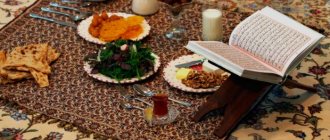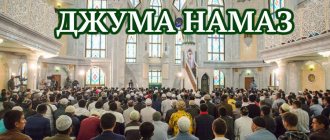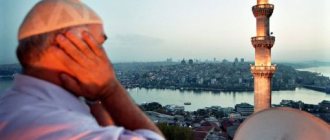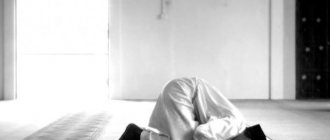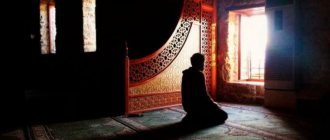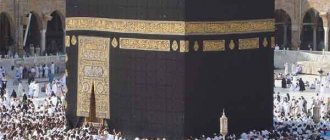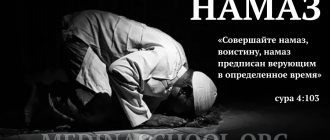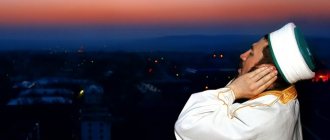On Thursday, May 13, the Muslim world will celebrate one of the most significant holidays of Islam - Eid al-Adha. This holiday of breaking the fast after fasting in the holy month of Ramadan is also called Eid al-Fitr (Idul-Fitr). The tradition of its celebration dates back to the time of the Prophet Muhammad.
Eid al-Adha is a moving holiday, celebrated at different times every year, as it is tied not to the civil calendar, but to the lunar calendar. This year, the holy month of Ramadan ends on May 12. In the evening, after sunset, those who are fasting have their last evening meal of the fast, Iftar, and with the onset of the 13th, the Eid al-Fitr holiday begins.
On the eve of the holiday, people clean the house and begin preparing festive dishes, some of which are distributed to relatives. Wealthy Muslims take care of the poor, distributing food and money to the needy so that they can also celebrate the holiday with dignity. Charity on the eve of the holiday is given special importance.
On the last day of the month of Ramadan, it is customary to pay obligatory alms - zakatul-fitr. Its main purpose is not only to help those in need, but also to cleanse minor sins unwittingly committed by a person during fasting in the month of Ramadan.
Everyone asks each other for forgiveness so that they can enter the holiday with a pure soul and thoughts, and put on elegant holiday clothes. The holiday is celebrated cheerfully and joyfully. On this day, it is customary to rejoice not only at the end of a long fast, but also at life itself, given by the Almighty.
On the night of the holiday, as a rule, families perform an additional prayer-namaz, in which people praise the Almighty and express their needs. It is believed that prayer at night before Eid al-Adha will certainly be heard.
Since the holiday of breaking the fast is not usually celebrated within four walls, on the first day of its celebration many people go to the mosque. Only men are present at the service, while women set the table at this time. Then the festive feast begins. Each house welcomes guests, while the owners themselves visit relatives and neighbors, bringing sweets as gifts, which are an indispensable attribute of the festive table.
The table itself consists mainly of meat dishes, pastries, jelly and fruit drinks, prepared according to different recipes depending on what is preferred in a particular area. On this holiday, it is customary not only to do good deeds and visit relatives and neighbors, but also to remember deceased loved ones, and also visit the cemetery.
Eid al-Fitr lasts three days, that is, this year it will be May 13, 14 and 15. In some regions of Russia this year, May 13 has been declared a day off, and in Crimea, where there is a large Tatar population, Friday May 14 has been made a day off.
And 70 days after Eid al-Adha, on July 20, the Muslim world will celebrate another great holiday for Islam - Kurban Bayram, which is also called the Feast of Sacrifice.
Festive prayer performed on Eid al-Adha and Kurban Bayram
On the eve of the upcoming holiday of Eid-ul-Fitr, we invite readers to familiarize themselves with the material revealing the features of the holiday prayer (salat-ul-id or id-namaz), which is an important component of this day.
According to the madhhab of Imam Abu Hanifa
'Eid is a holiday named in honor of the fact that the favors of Allah Almighty descend on His servants and that they return every year with joy.
Both 'id prayers were established in the Shariah in the first year of the Hijri. From Anas (may Allah be pleased with him) they say that when the Prophet (peace and blessings be upon him) moved to Medina, the inhabitants of this city celebrated for two days. When the Prophet (peace and blessings be upon him) asked about this, he was told that during the days of jahiliyya they had fun on these days. The Messenger of Allah (peace and blessings be upon him) said that the Almighty gave them two days better than before - these are Idul-fitr (the holiday of breaking the fast) and Idul-adha (the holiday of sacrifice).
Everyone who is obliged to perform Juma prayer must perform 'id-salat. Holiday prayer has the same conditions as Friday prayer, i.e. two rak'ahs and a khutbah. For Eid prayer, the khutbah is read (sunnat) after the prayer. But on Friday it is necessary (fard) to read the khutbah before prayer.
The time for both holiday prayers comes when on this day the sun rises above the horizon by the size of a bayonet. This is the time for Zuha prayer to begin. In terms of time, it will be 30 minutes after sunrise. The period expires before the lunchtime prayer, i.e. to the zenith.
Procedure for performing 'id prayers
The prayer begins with the words “assalatu jamia,” which literally means “come to the collective prayer.”
Everyone stands in rows and makes the intention (the imam and the ma'mooms (standing behind the imam)) for the holiday prayer. Ma'moums echo the imam when they intend. After saying the words “Allahu Akbar”, the ma’moums performing prayer behind the imam fold their hands on their stomachs. Read the dua "Sana" ( "Subhanaka Allahuma tabaraka ismuka wa ta'ala jadduka wala ilaha gairuka" ). Then the imam begins to recite takbir. They are also called added. These are three takbirs, not counting the takbir when entering prayer, with each of them they raise their hands, as if entering prayer, then lower them, but do not fold them. Each takbir is pronounced separately from each other three times, with an interval of time during which you can say “Allahu akbar” or read “subhanallahi walhamdulillahi wa illaha illallahu wallahu akbar . After reciting the third added takbir, the hands are folded on the stomach. The imam reads Surah Al-Fatihah and preferably Surah A'la out loud, then performs ruku' and sujud and stands for the second rak'ah. The imam reads Surah Al-Fatihah, then preferably Surah Al-Hashiya . After reading, they begin the takbir, they are pronounced, as for the previous rak'ah, three times and the fourth takbir for ruku'a. They perform ruku' judg, read "Attahiyata" and, as usual, leave the prayer with salam. After salam they remain seated and the imam reads both khutbahs. After this, he reads a sermon (about the sacrifice or the holiday of breaking the fast, respectively).
Takbir read on tashriq days
Tashrik is the name given to drying meat. Therefore, the 11th, 12th, 13th days of the month of Dhul-Hijjah, i.e. following Eid al-Adha, are called days of tashrik (ayamu tashrik). These days, after performing all farz prayers, men and women must read takbir. It is read before the afternoon prayer of the 13th day.
The order of reciting the takbir is as follows: “Allahu akbar, Allahu akbar, La ilaha illallahu wallahu akbar. Allahu akbar walilahil hamd . It is necessary to read once after each prayer, and to read three times is the sunnah.
Desirable actions on both days
On these days, everything that is desirable on Friday is desirable: bathe, use siwak, perfume yourself with incense, put on the best clothes, go to prayer early. But there are also additional sunnat for the holiday: before going to the festive prayer of breaking the fast, it is advisable to eat something, preferably an odd number of dates. And before the Eid al-Adha prayer, it is advisable to postpone eating in order to eat from the sacrificial meat.
On the way to the mosque (for prayer) they read the takbir (on the day of breaking the fast - silently, on Kurban Bayram - out loud). It is advisable to go one way and return another. Distribute zakatul fitr before leaving for prayer. It is advisable to perform ziyarat at the cemetery after prayer and give out alms as much as possible.
Both holiday nights are spent in vigils, time is spent in worship of Allah (peace and blessings be upon him), reading the Koran, performing namaz, remembering Allah.
It is advisable to perform both of these prayers in the field; it is condemned to perform them in mosques without a good reason.
Some solutions related to both holidays
If you were unable to perform a collective holiday prayer (behind the imam), you do not need to make up for it yourself. If the time for Eid prayer has passed (i.e., the time for lunch prayer has come) and you did not have time for prayer, then it can be performed the next day. Eid al-Adha prayer can be performed on three more subsequent days if there was a reason for which it was postponed.
The one who enters prayer after the imam, having read the takbirs, begins to read Surah Al-Fatiha , will read the takbirs, following the imam, if he does not let his hand follow him. If he does not have time to follow the imam, he, having entered the prayer, will go to the ruku, and read the takbirs there. If he enters into prayer after the imam rises from the ruku'a, he will restore what he missed after the imam completes the prayer.
It is disgraceful to perform Sunnat prayers before or after Eid prayers. They can be done upon arrival home. The khutbah begins with reading the takbir: the first - 9 times, the second - 7 times. On the days of tashriq, the takbir can be continued by adding: “...Allahu akbar kabiran walhamdulillahi kasiran wa subhanallahi bukratan wa asila la ilaha illallahu wahdahu sadaqa wa'dahu wa nassara 'abdahu wa a'aza jundahu wa gazamal ahzaba wahdahu la ilagya illa llahu wala na'budu illa Iyyahu mukhlisina lahuddin wa love karihal kafiruna. Allahumma salli 'ala sayyidina Muhammadin wa 'ala ali Muhammadin wa 'ala ashabi Muhammadin wa 'ala azwaji Muhammadin wa salim taslima .
According to the madhhab of Imam al-Shafi'i
The holiday prayer has two rak'ahs, and the intention to perform it is made as follows: "I intend to perform the desired holiday prayer of two rak'ahs in the name of Allah (following the imam)."
After saying “Allahu Akbar” when entering the prayer, it is advisable to read the prayer “Vajjahtu”, then it is advisable to raise your hands seven times as when entering the prayer and say “Allahu Akbar”, and after six times read the prayer “Subhana Allah Walhamdu Lillahi wa la Ilaha illallahu wallahu” Akbar . And after the seventh “Allahu Akbar” you should read Surah al-Fatiha . (If the collective prayer is read aloud by the imam first, and the mammums read it later). After Surah al-Fatiha, it is advisable to read Surah al-Kaf or Surah al-A'la .
In the second rak'ah, after saying "Allahu Akbar" and getting up for the second rak'ah, it is advisable to say "Allahu Akbar" in the above-mentioned way and read the prayer "Subhana Allahu Walhamdu Lillahi wa la ilaha illallahu Wallahu Akbar" after four, and after the fifth read Surah al-Fatihah . After Surah al-Fatiha, it is advisable to read Surah al-Qamar , or al-Gashiya .
If the prayer was a collective one, after it two khutbahs should be read with the same conditions that should be observed for the khutbahs of Friday prayer.
If a person cannot perform prayer in the above-mentioned way, he makes an intention for the holiday prayer and performs the usual desired prayer of two rak'ahs.
And since the Eid prayer occurs once a year, a Muslim should not neglect it, and if he missed it for a good reason, it is advisable for him to make up for it.
Source
How many angels does each person have?
Akika (baby sacrifice)
How to raise your nafs?
A simple dhikr that will open your life to blessings
What kind of holiday is this, how to celebrate
Eid al-Adha is considered the second most important Muslim holiday after Eid al-Adha. It is also called Eid al-Fitr. It symbolizes the end of the strictest fast in the month of Ramadan. During this time, devout Muslims are prohibited from consuming food and water during the day. It is allowed to sit down at the table only after sunset. Also prohibited are:
- sexual relations;
- smoking and using other substances that cloud the mind;
- foul language;
- lie.
Preparations for the celebration begin four days in advance. This time is spent on general cleaning of housing, utility rooms, and cleaning livestock. Then all family members perform ablution. People clean themselves up and put on clean clothes. In the evening a meal is prepared, and in the morning the children deliver food to relatives. At the same time, Muslims give each other gifts and decorate the house.
On a holiday, people get up early and put on festive clothes. An hour before sunrise, the festive gayet prayer begins in mosques. Only men are present at the service, while women set the table at this time. Then the festive feast begins. Each house welcomes guests. Muslims also visit relatives and neighbors themselves, bringing sweets as gifts.
Before the holiday begins, wealthy families make sure to distribute money and food to those in need so that they too can celebrate the holiday with dignity. This almsgiving is called “fitr-sadaqa”. Also on Eid al-Fitr it is customary to do good deeds, visit relatives, remember deceased relatives and visit the cemetery.
Traditions of Eid al-Adha
Traditionally, Eid al-Adha takes three days. The Islamic lunar calendar and the Gregorian calendar we are used to do not coincide, and therefore it is impossible to accurately name the date of the celebration. It all depends on the lunar months and the peculiarities of date calculation. The tradition of celebrating Eid al-Adha dates back to 624, that is, from the time of the Prophet Muhammad.
Eid al-Fitr is a truly great and significant holiday for all Muslims. To understand, you can compare the celebration with Christmas, which is no less important for the Christian world. According to traditions, on the days of the holiday it is necessary to do good deeds, give alms, make donations - these deeds will definitely be counted towards the person in the future.
Eid al-Fitr is a day when one remembers relatives and friends, both living and dead. Muslims glorify the name of Muhammad and bring his teachings to the world. Special attention is paid to reading the Koran - this is the spiritual component of the holiday. In general, Eid al-Fitr calls for cleansing the soul, seeking light and goodness, and performing good deeds.
What festive dishes are prepared for the Muslim holiday?
Having determined the start date of Eid al-Adha, housewives purchase products to prepare treats. Completing a long, strict fast, guests are served delicious, well-satisfying dishes. It is mandatory to treat household members and guests with high-calorie, sweet desserts. In many families, on Eid al-Fitr they prepare:
- lamb broths and soups;
- hearty main courses with veal and lamb;
- meat salads and vegetable appetizers;
- desserts and baked goods;
- uzvar, compote, tea.
Each country puts its own national dishes on the festive table. Tatar housewives treat guests to pancakes and hearty pies. In the republics of Central Asia, an indispensable attribute of the festive table is pilaf. Fruits, dates and sweets are eaten for breakfast in Saudi Arabia. Be sure to eat a hearty lunch. This guarantees a rich table all next year. In Kyrgyzstan, on Eid al-Fitr, you need to visit 7 houses and try treats everywhere.

